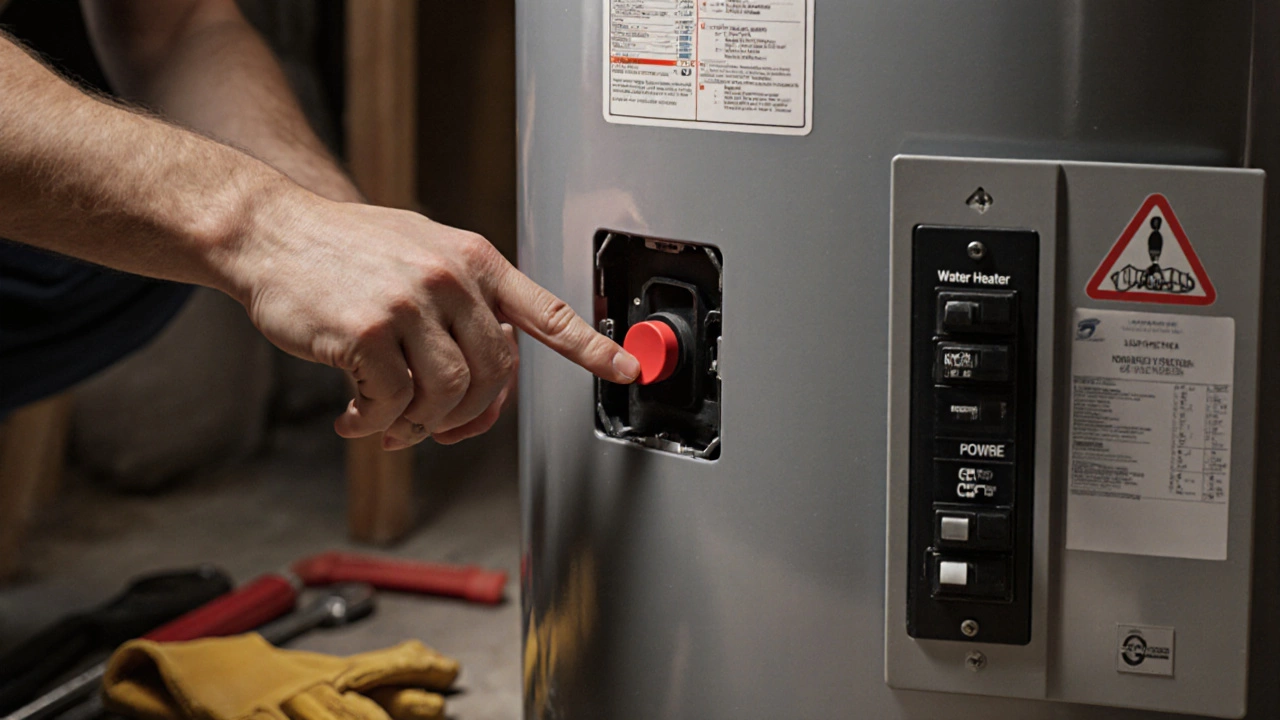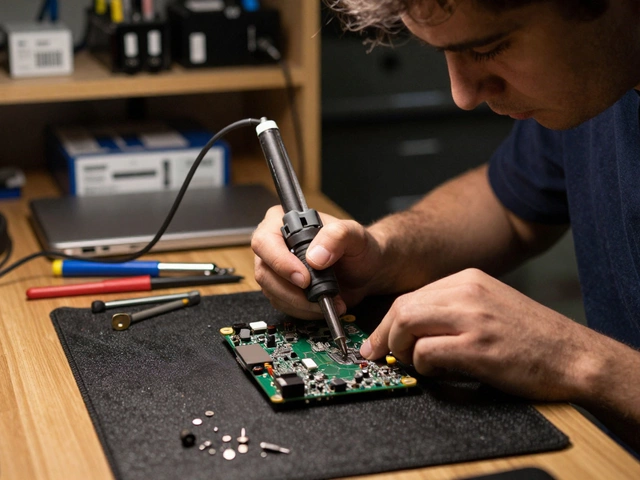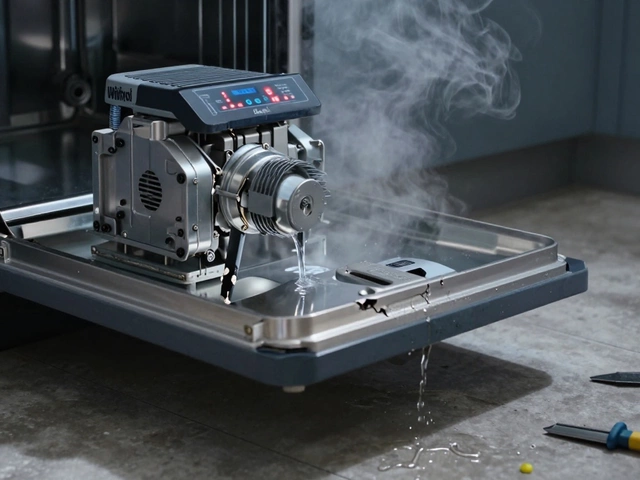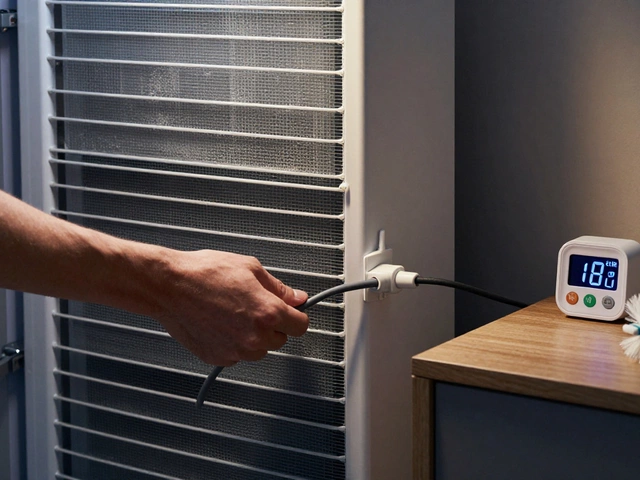When your hot water suddenly turns cold, the first thing you might think is that your water heater is broken. But before you call a plumber or start thinking about a replacement, there’s a simple fix you can try: resetting the water heater. Most electric and gas water heaters have a reset button or a pilot light that can be relit - and doing it right often brings your hot water back without any cost or hassle.
Why Your Water Heater Might Need a Reset
Water heaters are built to last 8 to 12 years, but they don’t always fail with a bang. Sometimes, they just stop working because of a safety feature kicking in. The most common reason? An overheating condition. Electric water heaters have a high-limit switch that cuts power if the water gets too hot. This usually happens when the thermostat malfunctions or when sediment builds up at the bottom of the tank, trapping heat. Gas water heaters don’t have a reset button, but their pilot light can go out from drafts, gas supply issues, or a faulty thermocouple. You’ll know you need a reset if:- There’s no hot water, but the power is on
- The water heater makes a clicking noise
- The reset button is popped out (on electric models)
- The pilot light is out (on gas models)
How to Reset an Electric Water Heater
Electric water heaters have a red reset button, usually located near the thermostat. It’s often hidden behind a metal panel or insulation cover. Here’s how to find and press it safely.- Turn off the power. Go to your home’s electrical panel and flip the breaker labeled "Water Heater" to the OFF position. This isn’t optional - you’re working near live wires, even if the heater isn’t running.
- Locate the reset button. Remove the access panel on the side of the water heater. You’ll see one or two thermostats. The reset button is a small, red button, usually right next to the top thermostat. It might be covered by a piece of plastic or insulation.
- Press the button. Push the button firmly until you hear a click. If it doesn’t click, it may have already been reset, or the issue is deeper than just a tripped switch.
- Replace the panel and turn the power back on. Put the cover back, then flip the breaker to ON.
- Wait 30 to 60 minutes. It takes time for the water to heat up. Test the hot water at a faucet. If it’s still cold, the problem is likely a bad heating element, thermostat, or wiring.
If the reset button pops out again after you turn the power back on, don’t keep resetting it. That means something is seriously wrong - probably a shorted heating element or a thermostat stuck in the "on" position. Continuing to reset it can damage the tank or cause a fire.
How to Relight a Gas Water Heater Pilot Light
Gas water heaters don’t have a reset button. Instead, they rely on a small, continuous flame called a pilot light. If it goes out, the gas valve shuts off automatically for safety. Relighting it is easy - if you follow the steps correctly.- Turn the gas control knob to "OFF." Wait at least 5 minutes. This lets any leftover gas clear out of the area. Never skip this step - gas buildup can cause an explosion.
- Find the pilot light assembly. Look at the bottom of the water heater. You’ll see a small metal tube with a flame opening. It’s usually near the gas control valve.
- Turn the knob to "PILOT." Press and hold the knob down. This sends gas to the pilot tube.
- Light the pilot. Use a long-reach lighter or match. Hold the flame to the pilot opening while still holding the knob down. You should see a small blue flame ignite.
- Hold the knob for 30 to 60 seconds. This lets the thermocouple heat up. The thermocouple is a safety sensor that tells the gas valve the pilot is lit. If you let go too soon, the gas will shut off.
- Turn the knob to "ON." If the pilot stays lit, you’re done. Wait 10 to 15 minutes for the water to heat up.
If the pilot won’t stay lit after several attempts, the thermocouple is likely faulty. It’s a cheap part - around $15 to $25 - and easy to replace if you’re comfortable with basic tools. If you’re not, call a professional. A gas leak is no joke.

What If Resetting Doesn’t Work?
Resetting fixes about 60% of no-hot-water problems. If your water is still cold after resetting, here are the next things to check:- Electric models: Test the heating elements with a multimeter. A bad element won’t show continuity. Most homeowners don’t have one, so if you’re unsure, skip this step and call a pro.
- Gas models: Check the gas supply. Is the shut-off valve open? Is your gas bill paid? Sometimes the simplest answer is the right one.
- Both types: Drain and flush the tank. After 5 to 7 years, mineral buildup can coat the bottom of the tank, preventing heat transfer. Flushing it once a year prevents this. If your tank hasn’t been flushed in years, it might be time for a replacement.
Also, pay attention to the age of your heater. If it’s older than 10 years and you’re resetting it often, you’re buying time, not fixing it. Newer models are 20% to 30% more energy efficient. The cost of repeated repairs often adds up to more than a new unit.
When to Call a Professional
You don’t need to be a plumber to reset a water heater. But some situations demand a licensed technician:- You smell gas at any point - leave the house and call your gas company immediately
- The reset button keeps tripping
- The pilot light won’t stay lit after replacing the thermocouple
- You see water pooling around the base of the tank
- The heater is making loud popping or rumbling noises - this usually means heavy sediment buildup
These aren’t DIY fixes. Trying to repair a gas valve, electrical wiring, or a leaking tank yourself can lead to serious injury, fire, or flooding.
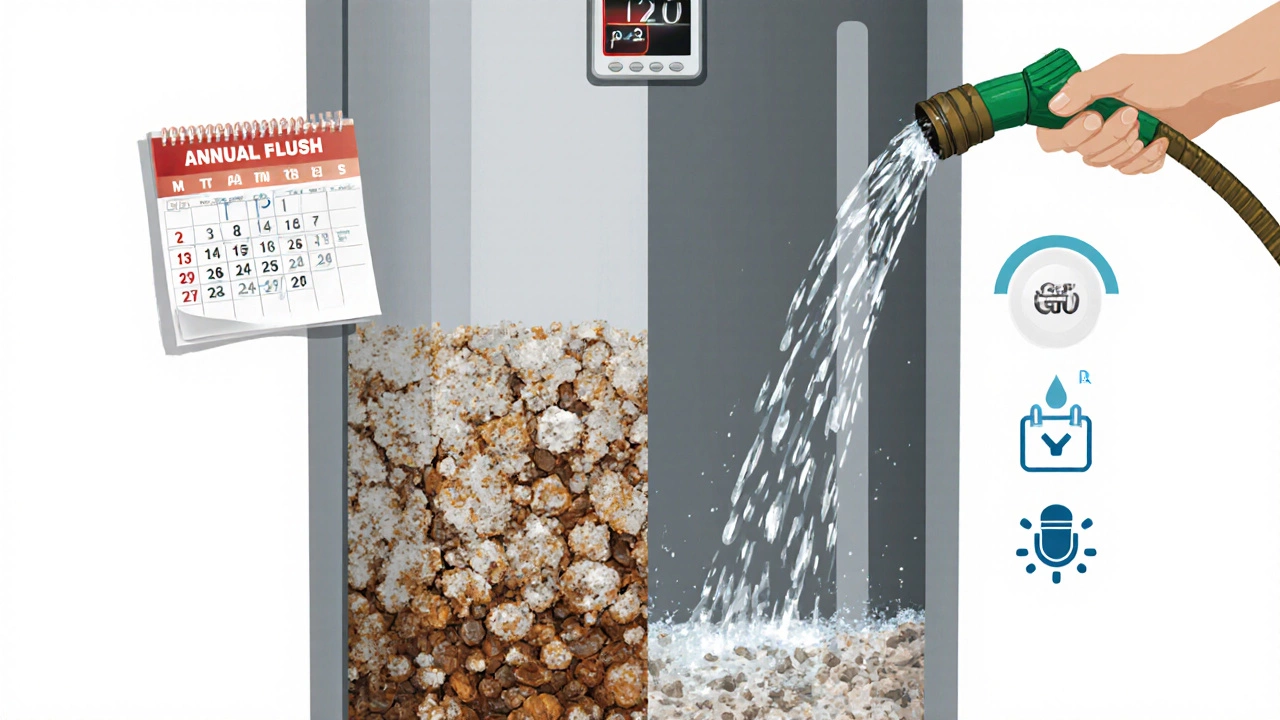
Prevent Future Resets
The best reset is the one you never have to do. Here’s how to keep your water heater running smoothly:- Flush the tank annually. Attach a garden hose to the drain valve and let water run into a bucket or drain for 5 to 10 minutes. This removes sediment.
- Set the thermostat to 120°F. Higher temperatures don’t mean better showers - they just waste energy and wear out the tank faster.
- Check the pressure relief valve. Lift the lever once a year. Water should flow out. If it doesn’t, replace it.
- Install a water softener if you have hard water. Hard water causes scale buildup, which kills heating elements and reduces efficiency.
These simple habits can double the life of your water heater and save you hundreds in energy bills each year.
Why does my electric water heater keep tripping the reset button?
The reset button trips when the water gets too hot - usually because of a faulty thermostat or a shorted heating element. If the button pops out repeatedly, one of these parts is likely failing. Continuing to reset it can damage the tank or cause a fire. Turn off the power and call a professional.
Can I reset a gas water heater like an electric one?
No. Gas water heaters don’t have a reset button. Instead, you need to relight the pilot light if it goes out. If the pilot won’t stay lit, the problem is usually a bad thermocouple, not a tripped safety switch.
How long does it take for hot water to come back after resetting?
For electric water heaters, expect 30 to 60 minutes. Gas heaters heat faster - usually 20 to 40 minutes. The time depends on the tank size and how cold the water was. Don’t rush it - waiting ensures the tank heats evenly.
Is it safe to reset a water heater myself?
Yes, if you follow safety steps. Turn off the power for electric models. Wait 5 minutes for gas to clear before relighting a pilot. Never force a reset button or bypass safety features. If you’re uncomfortable, call a professional. There’s no shame in asking for help with gas or electricity.
What’s the average cost to replace a water heater?
A standard 40- to 50-gallon electric water heater costs $800 to $1,500 installed. Gas models run $1,000 to $2,000. Prices vary by brand, tank size, and labor rates. If your heater is over 10 years old, replacement is often cheaper than repeated repairs.
Next Steps After Resetting
Once your hot water is back, make a note of the date. If the problem returns in less than 6 months, it’s a sign your water heater is nearing the end of its life. Keep a log of resets, strange noises, or changes in water temperature. This helps a technician diagnose the issue faster if you need service later.Also, consider upgrading to a tankless water heater if you’re replacing it. They last 20 years, use 30% less energy, and never run out of hot water. The upfront cost is higher, but the long-term savings add up.
Resetting your water heater is a quick, low-cost fix for many common problems. But it’s not a magic cure. Use it as a diagnostic tool - not a permanent solution. When in doubt, err on the side of safety. A little time now can save you a big mess later.
